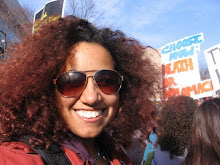As an artist working in both ceramics and photography, I have become aware of a constant struggle in my work to preserve experiences, which belong to the past. While I am not consciously working towards the goal of preservation, this process is inherent in the materials themselves.
When a ceramic work is fired, the clay transforms and vitrifies. Once the clay is vitrified, it is stronger and can no longer be easily reworked or recycled. Ceramic is an enduring material; many ceramic artifacts have survived for centuries, providing us with links to some of the world’s earliest cultures.
Although a photograph does not have the same inherent capacity for physical endurance as a ceramic object, the act of photographing captures that has passed and fixes or preserves it for future viewers. For example, Victorian photographs of the dead have long outlived their subjects and preserve them to this day. Cultural critic and theorist Roland Barthes has written that: “All young photographers who are at work in the world, determined upon the capture of actuality, do not know that they are agents of Death” (photoquotes.com). Barthes’ view was that photographs are not a representation of ‘what is,’ as that moment has passed and therefore photographs can only represent ‘what was.’ By recording moments of the past, we become more aware of the continual changes in the world.
I find this notion of preservation relevant to the properties of my materials, but I question how materials that preserve the past can successfully interact at the same time with the current context. While preservation is an important function of my materials, my primary conceptual interest is in the ephemeral. It is the intersection of temporality and permanence that creates a duality and tension within my work as an artist.
I love working with clay precisely because there is a constant tension in the process. The clay reacts and responds to being worked and retains a physical memory, which can cause it to crack and break. I respond to the fact that breaks and changes can occur in clay in each state, from wet to fired. I enjoy the chemistry of oxides and glazes, along with the spontaneous events that occur in the uncontrolled atmospheres of wood, soda, salt and raku firings. My ceramic work is the result of the collaboration between my hands, tools, clay, glaze and the atmosphere of the firing itself. This collaboration and the spontaneity inherent in the firing process have held my attention for the past eight years.
Although my studio practice is based primarily in ceramics and photography, I have diversified my materials over the years, using bronze and paper casting, woodworking and welding in recent works. My art practice is not defined by any one material; I find working in a single material to be limiting.
I define my recent photographic work as focused on capturing an emotion or atmosphere rather than depicting an event, place or time. I struggle to move photography beyond the boundaries of literal visual representation towards the more abstract and emotional content that can be found in modern painting, for instance.
At the same time, my recent ceramic work has placed an emphasis on multiples. I use the wheel as a primary tool in most of my ceramic sculptures. I create a tension between the objects and the space around them, carefully balancing and stacking forms without the use of adhesives. The over-arching concept in my work is based on memory and fragments of the past. These are then reconstructed into new abstract forms, which reference multiple organic shapes and topics.
In my experience the work comes before the concept; rather than waiting for an idea to spark a work, I work to spark an idea. I find a method of working that interests me and then work and work for weeks and months; it is usually a few weeks after the work is finished that I can then take time to reflect and dissect the theme/concept behind my method of working. The concept is formed subconsciously as I work but I find it too frustrating to both work intensely on a piece and consciously make sense of a concept.
















